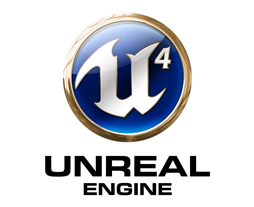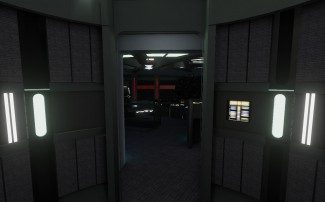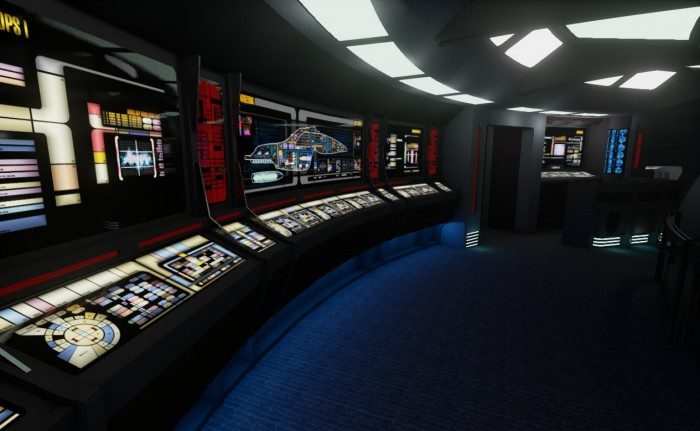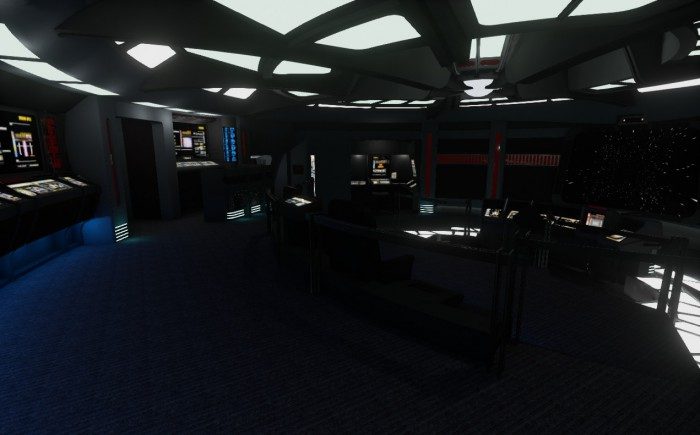Unreal Engine 4 shipped with out-of-the-box support for the Oculus Rift recently and the first demo supporting the VR Headset has just been released. Thomas Kadlec’s ‘Starship Bridge Demo’ puts you on the bridge of Star Trek’s Voyager.
Update 2: New link broken broken. Yet another Alternative download here.
To Boldy Split Virtual Infinitives


And so, perhaps predictably, the first homebrew title to ship from the UE4 docks has a Star Trek theme, Star Trek: Voyager to be exact. Kadlec has just released a demo entitled “Starship Bridge Demo” which seeks to render Captain Janeway’s bridge (no innuendo please) in glorious Oculus Rifto-vision.


Demo Author Shares His Thoughts on Developing For the Oculus Rift in Unreal Engine 4
Road to VR asked Thomas if he’d be kind enough to share his feeling and experience of Unreal Engine 4 thus far.
I’m a huge Oculus Rift fan, Star Trek fan and Unreal Engine 4 fan. So I just figured I’d mix those all together!
I’ve been a c# programmer since the language was in beta around 2001. So when I first learned about Unity 4 I thought it was amazing. I loved how reusable everything seemed to be. I thought nothing could be easier to use or more accessible for game development. However, after diving into Unreal Engine 4, it goes way beyond that for me. It’s like using software from the future.
I almost have the sensation of being a “movie director” when working with Unreal Engine 4. I can come up with an idea and in a matter of minutes you can come up with an implementation that looks really amazing.
For example, I was showing my progress to my girlfriend. At the time I had a static view of a planet on the main view screen. I was just going to leave it at that. She said something along the lines of, “I can’t wait to see it moving with the stars going by!” It was one of those moments of thinking, “crap she’s right I can’t just have a static view screen. This is going to take a lot of work and probably not going to look good.”
Yet seemingly in no time I created a particle system that emits stretched white particles in down the x-axis, placed a camera that renders to a texture facing the emitter and voila, put that texture in a material and the material on the view screen geometry. I got exactly the effect I wanted, one I feel mimics the look of the original TV series.
The material and blueprint system are the same way, it feels much more like you are describing what you want than writing a bunch of shader language code. The Oculus Rift implementation is solid, it looks great and and I really like the pricing model they have going.
—
Our thanks to Thomas for sharing his thoughts.
You can download the Starship Bridge Demo here. We’ll hopefully be following up on this article with a more in-depth look at UE4 and what what it brings to VR.


